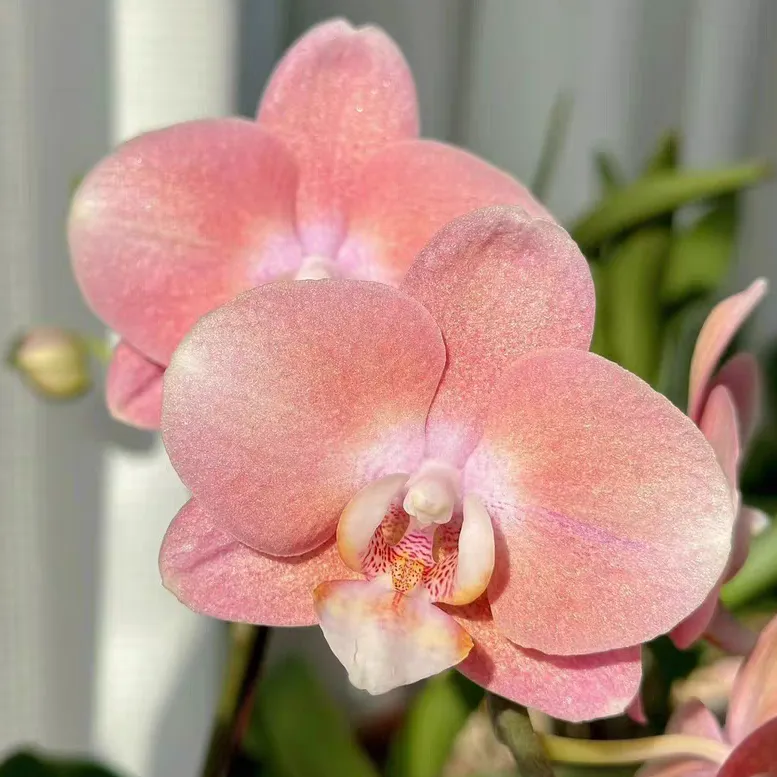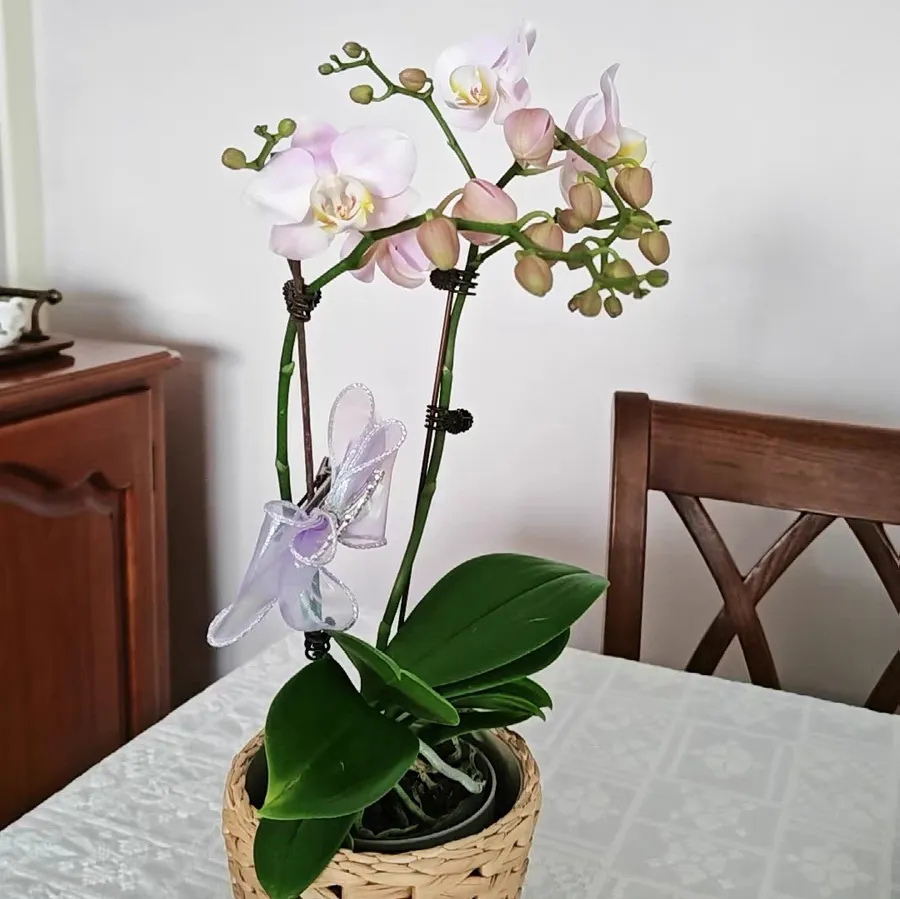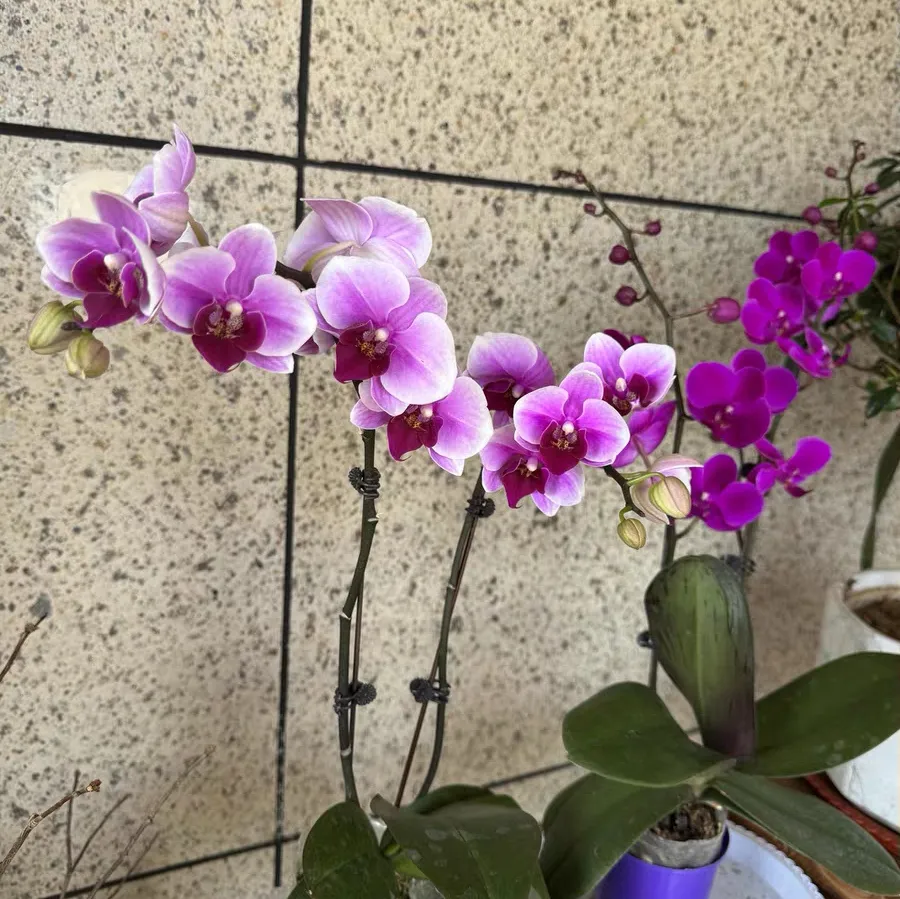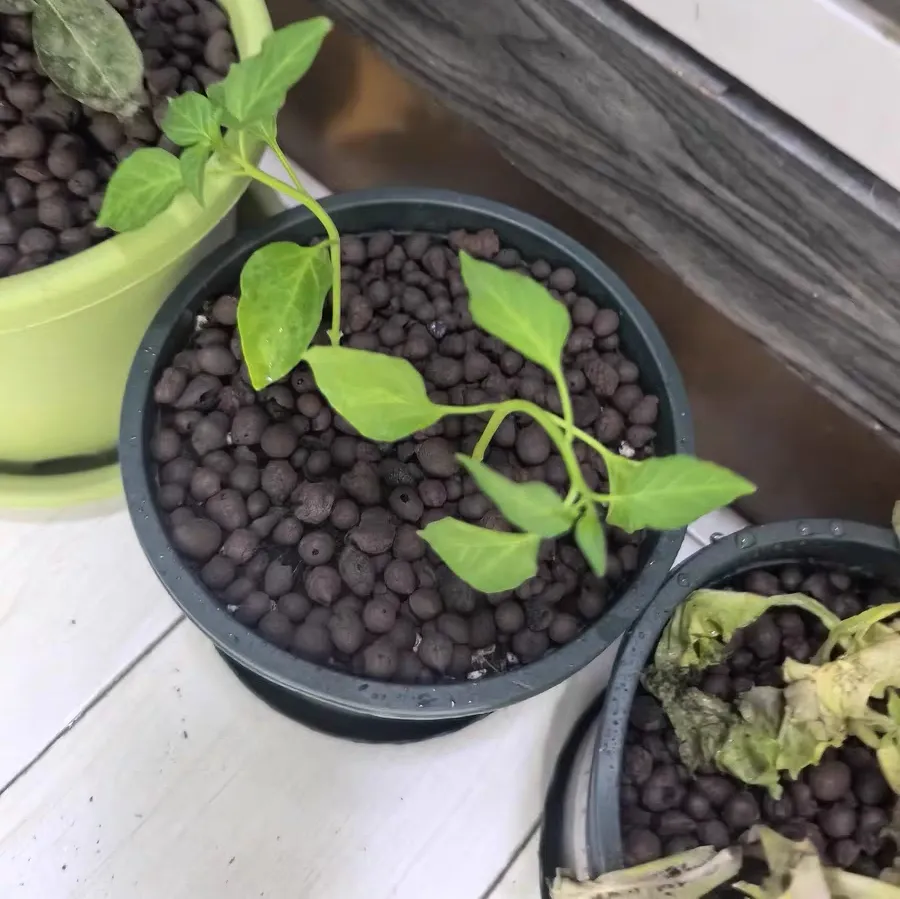When cultivating Phalaenopsis orchids, the most dreaded situation is encountering hollow roots! You look at a seemingly healthy orchid, and when you check its roots, you find that they are all hollow. It's really heart-breaking. In fact, hollow roots are caused by neglecting the details of cultivation. Here are some common reasons summarized for you.
1. Watering
Watering is definitely the "number one killer" of hollow roots in Phalaenopsis orchids! If you water too frequently and the substrate remains wet all the time, the roots will rot and turn into hollow roots after being soaked for a long time. On the other hand, if you always forget to water, the roots will become shriveled and hollow due to long-term lack of water. When cultivating Phalaenopsis orchids, you need to master the principle of "watering when the soil is dry and making it thoroughly wet when watering". Water thoroughly when the surface of the substrate feels dry.
2. Temperature
Phalaenopsis orchids are delicate tropical flowers and are most afraid of sudden drops in temperature! Especially in autumn and winter, if you forget to bring them indoors at night and they are exposed to the cold air, the vitality of the roots will decline, and gradually they will become hollow. Usually, you should pay attention to the weather forecast and take measures to keep them warm in advance.
3. Not Repotting
Many people keep the Phalaenopsis orchids they bought at home in the seedling cups and never take them out of the cups for the sake of convenience. This is a big mistake! The roots will be stuffy and have poor air circulation in the small cups. Over time, they will lack oxygen and eventually turn into hollow roots. It is recommended to replace the seedling cups with breathable transparent orchid pots as soon as possible after bringing the orchids home to allow the roots to breathe freely!
4. Exposed Roots
If you find that the roots of the Phalaenopsis orchid have grown out of the pot and are exposed to the air, don't ignore them! If the air is too dry, the roots will lose water quickly. After a long time, their transport and metabolism ability will weaken, and they will gradually become hollow. When you see exposed roots, you should stuff them back into the substrate in a timely manner, or wrap them with moss to keep them moist.
5. Substrate
Some flower enthusiasts apply fertilizers too vigorously, or the substrate they use has a high salt content. In this case, the roots not only cannot absorb nutrients but also will dehydrate and become hollow. When choosing a substrate, try to use loose and breathable sphagnum moss and bark, and follow the principle of "applying thin fertilizers frequently" when fertilizing.
Emergency Treatment for Hollow Roots
Don't soak the orchid in a large amount of water immediately when you find hollow roots! First, take the Phalaenopsis orchid out of the pot, gently clean the rotten roots, and spray water on the roots with a spray bottle to keep them moist. After 2 to 3 days, when you see white crystal tips emerging, you can water it normally. During this period, don't be tempted to water it too much. Give the roots time to "catch their breath" so that they can grow strong again!
In short, when cultivating Phalaenopsis orchids, you need to pay more attention to these small details and avoid these pitfalls. Only in this way can the roots be strong, the leaves be green, and the orchids bloom every year.
What's the matter with the hollow roots of Phalaenopsis orchids?

Share with
Tagged in :




Leave a Reply